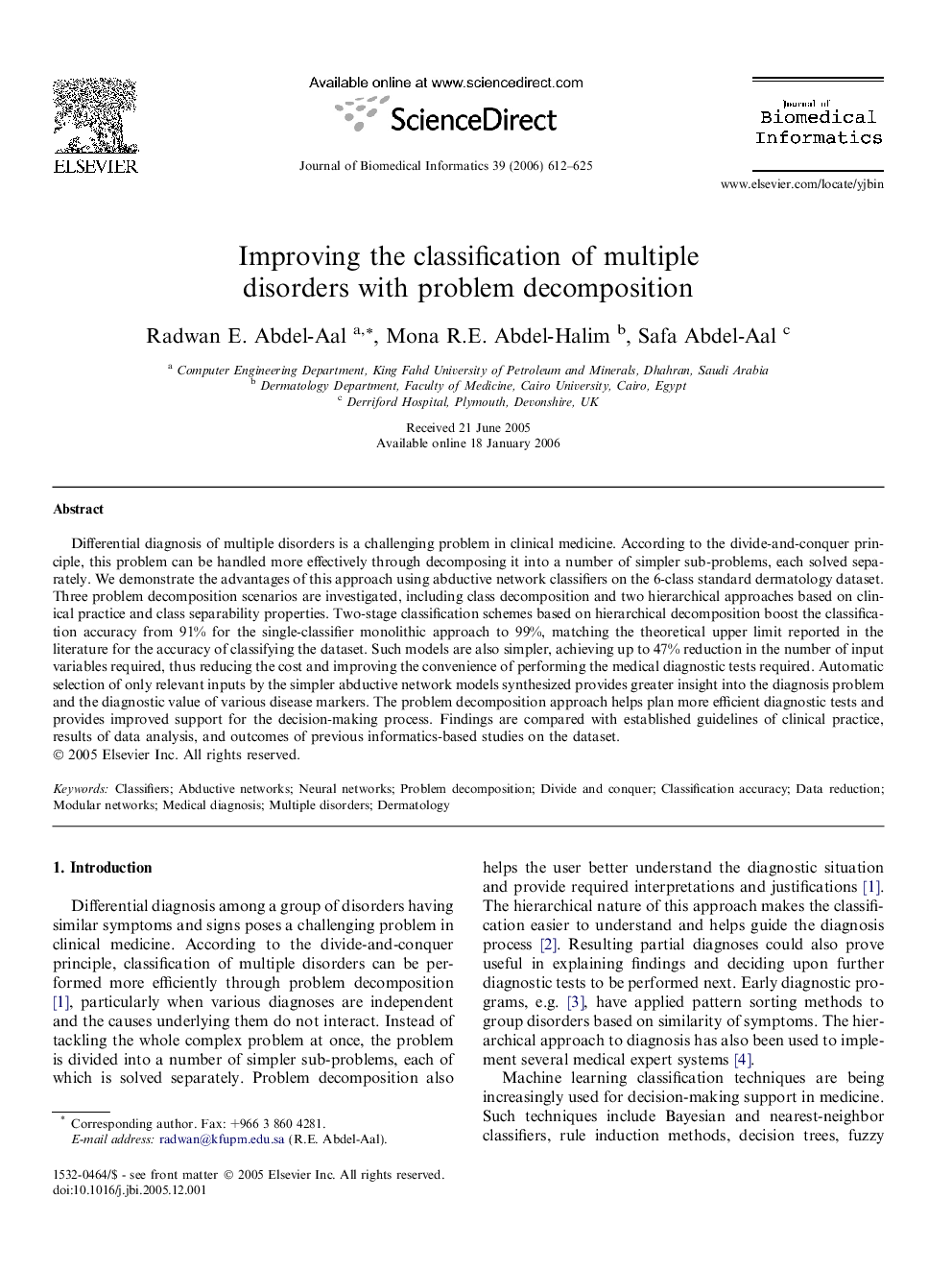| کد مقاله | کد نشریه | سال انتشار | مقاله انگلیسی | نسخه تمام متن |
|---|---|---|---|---|
| 517692 | 867495 | 2006 | 14 صفحه PDF | دانلود رایگان |

Differential diagnosis of multiple disorders is a challenging problem in clinical medicine. According to the divide-and-conquer principle, this problem can be handled more effectively through decomposing it into a number of simpler sub-problems, each solved separately. We demonstrate the advantages of this approach using abductive network classifiers on the 6-class standard dermatology dataset. Three problem decomposition scenarios are investigated, including class decomposition and two hierarchical approaches based on clinical practice and class separability properties. Two-stage classification schemes based on hierarchical decomposition boost the classification accuracy from 91% for the single-classifier monolithic approach to 99%, matching the theoretical upper limit reported in the literature for the accuracy of classifying the dataset. Such models are also simpler, achieving up to 47% reduction in the number of input variables required, thus reducing the cost and improving the convenience of performing the medical diagnostic tests required. Automatic selection of only relevant inputs by the simpler abductive network models synthesized provides greater insight into the diagnosis problem and the diagnostic value of various disease markers. The problem decomposition approach helps plan more efficient diagnostic tests and provides improved support for the decision-making process. Findings are compared with established guidelines of clinical practice, results of data analysis, and outcomes of previous informatics-based studies on the dataset.
Journal: Journal of Biomedical Informatics - Volume 39, Issue 6, December 2006, Pages 612–625